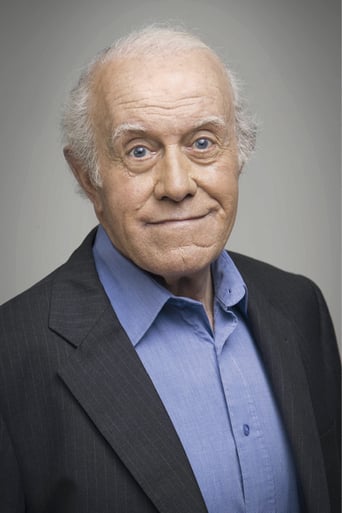Clevercell
Very disappointing...
Teringer
An Exercise In Nonsense
Lidia Draper
Great example of an old-fashioned, pure-at-heart escapist event movie that doesn't pretend to be anything that it's not and has boat loads of fun being its own ludicrous self.
Lela
The tone of this movie is interesting -- the stakes are both dramatic and high, but it's balanced with a lot of fun, tongue and cheek dialogue.
mgruebel
Long before Spielberg's "Tintin," or the fun but low production value TV series, came the Tintin movies of the 60s and 70s, like "Le laq au requins" (The Lake of the Sharks), "Les oranges bleues" (The Blue Oranges) and "Le temple du soleil" (The Temple of the Sun). Of these films, "Temple" most reflects the difficult transition Georges Remi (Herge to fans) made as an artist from the 1930s to the 1950s. His "Tintin au Congo" or "Tintin en Russie" are jingoist tales of Belgian colonists and adventurers. Herge even had to redact dialog bubbles in "Congo" later on. But converts to a cause often become its strongest proponents. By the time he wrote "Le lotus bleu" or "Temple," he has strong young characters representing their societies (Chang for China, Zorrino for Peru). Indeed, when "Temple" first came out as a weekly strip in a magazine, it was accompanied by detailed articles on Peru, the culture of the Incas, and the fauna and flora of the region. A few years later, when penning "Tintin au Tibet," Herge had become post-modern.Herge always retained a keen eye for racism and stereotyping, and Capitaine Haddock was his medium for it. He bumbles and stumbles around foreign locales as a comedic character, mis-appreciating everything in a storm of swearwords while Tintin, the straight man, befriends the locals and gets down to business. However, Herge never fell for political correctness, and the locals are as likely to be bad as good, and the ones in "Temple" are no exception to the rule.The film chronicles Tintin's voyage to rescue his friend Professeur Tournesol (Calculus), abducted by an Inca cult when he desecrates a hallowed bracelet. On their way, Tintin and Haddock get to know Peru, are chased by bumbling detectives, are befriended by some Indios and are hunted by others, with Condors, alligators and spitting llamas thrown in along the way. The voyage ends in success when Tintin, captured by the Incas, uses his knowledge of a solar eclipse to awe his captors. Here the film (and Herge) grossly underestimated the Incas, who had very sophisticated astronomical knowledge. But much of this would not have been known to Herge when he wrote the story in the 1940s (while SS occupied his house!).The film follows the two comic books fairly faithfully, with extras from the magazine strip thrown in (the magazine version was more extensive than the comic books, which were always cut back to 62 pages). I saw it in French, and it had a great soundtrack with original songs. Many designs were faithfully taken from archaeological material to add realism to the story. The animation occasionally suffered from amateurish drawing, Belvision just was not Disney Studios, where Disney never tolerated imagery imperfection in any of his films.Despite the not always perfect animation, the story moves along with good doses of humor and adventure, stalling only occasionally, and it does something that will be hard to replicate by any Spielberg Tintin sequel: it takes itself and its young viewers seriously. The humor is never self-deprecating, rather it showcases the difference between Haddock's and Tintin's views of the world.
johnnyboyz
For all that's at stake; the great danger particular characters therein come to find themselves, as well as the sorts of great distances they travel throughout, Tintin and the Temple of the Sun, an all-animated 1969 adventure film, is excruciatingly bland. At least, I would have settled for bland; the film does have this nasty undercurrent of hatred and ill-thought simmering beneath its surface, epitomised by one of the supporting acts to the titular Tintin and his rather brash characteristics. Primarily, it is a film about how savage and how alien specific ethnicities are, and how they need a white Caucasian male to enter their domain and put them through a process of 'civilisification'. The film, a short and breezy piece clocking in at just over an hour although feeling thrice that, is a dull; uninvolved and somewhat primitive attempt, an adventure film without the sense of adventure, indeed the sense of anything; a film which builds to what it perceives to be some sort of harrowing finale, but can only come across as distastefully xenophobic; a film that is uncourteous and brash without any right to be, a children's film that is repetitive, mean-spirited and really, truthfully terrible.The film begins with its bluntest moment of exposition, an individual quite literally walking onto a stage, doubling for a press conference, in which he reveals to us the unfortunate recent history more broadly linked to that of a Peruvian Inca God's tomb. Specifically, those European explorers whom only a few weeks ago raided it and were met with a terrible curse, not death like it perhaps ought to have been, but of a sort that comatosed them. Later, the Philippe Ogouz voiced eponymous hero of the hour, Tintin, that fleet footed; athletic and all round friendly Belgian, although you wouldn't know any of that here without having previously read or seen one of his adventures, is dwelling at home with some of his friends whilst about to host a rendez-vous with one of the explorers yet to be struck down by the curse. The explorer doesn't make it, and is jinxed en-route. Terror additionally strikes when, on account of a confusing blend of unprecedented levels of weather seemingly working in tandem with a pair of dastardly crooks (why would the Inca Gods need both - wouldn't you just need to use one or the other if you actually were/weren't an all powerful being?) infiltrate Tintin's grounds; create a distraction and swipe Tintin's long-standing ally Professor Calculus. Enraged, and with his faithful yet ultimately superfluous pet dog Snowy, as well as the drink-obsessed; loud mouthed; unshaven Captain Haddock (Bertrand), Tintin sets off on a quest to get Calculus back - and Lord, wouldn't you know it, but it isn't long before they realise they've got to dart off to Peru.Principally, the film fails on two very basic levels; that of narrative and character, with a further level of deficiency more inclined to issues of representation depressingly propping it up. Nobody learns or discovers anything throughout the course of the film apart from one of the Inca high priests and the truths of his supposedly blood-thirsty ways, an epiphany brought about by humble Westerners. There is a ton of grotesquely misjudged content involving the ever-increasingly irritating Captain Haddock character, whose raging jingoism aimed at the Peruvians (of whom are depicted as simple, backward people engaging in fiestas and localised customs we are invited to gawp at rather than understand) get gradually and gradually more distressing as the film wears on. His unparallelled hatred of his South American surroundings; its people, culture and landscape included, is initially epitomised in his lack of being able to function on a 'proper' wavelength with that of the location's many llamas and their temperamental attitudes. Their clashing often results in the animals spitting into Haddock's face; but where there is an opportunity to establish Haddock as the grizzled man he is, ignorant and pig-headed to his foreign surroundings, before having him see the error of his ways, the film can only have the audacity to feed of this ignorance before including a scene nearer the end in which he gets his revenge on the beast by spitting back into one of their faces prior to departure: nothing has been learnt, and the coming to understand a foreign culture and the attitudes one should evoke in relation to it has been sideswiped for bodily excretial orientated humour.Any dramatic content which threatens to rear up prior to this is immediately undercut by that of the presence of two characters: The Thompson Twins; characters whose presence I was never sure as to what the point was. They appeared often as rivals to Tintin, which is a tract that may have worked well; only occasionally, and begrudgingly, teaming up with Tintin and his troupé. Perhaps their being there was motivated not by rescue but by something else – they might have acted as good foils for Tinin's crew, but are instead two characters useless to proceedings and do their best to make the comedic element to the film as painful as possible. The villains, that of the Inca people, are stock bad guys of a non-white variety crudely inserted into the piece; the film punishing the one Peruvian, whom it tries to portray as an ally to Tintin, by victimising them and by rendering their contribution to the task as a guide whom constantly needs aiding in spite of being in his own surroundings. The film, surprisingly and depressingly so, is an ill-judged and badly played production; a film with little in the way of life, verve or competency and is best left alone.
Dave_Pit
It has been some time since I read the fantastic Tintin books by Herge but I remember enough to know that there are a number of changes in this version from the book so do not expect to see an animated book in front of you. One example, look at the front cover of prisoners of the sun ( image is online at Amazon ), it does not appear in any of the frames - why? Maybe considered too "scarey" for animated visuals yet not for a book read by the very same audience. The music and songs are a pretty dire purile Disney-ish addition, and in the dubbed English version the voices grate. Some of the animation is a mite dodgy but generally good ( using the base artistic talent of Herge how could it not be ), but my fiance who did not know when the "filming" had taken place thought it was computerised it was so good enough and in her view more advanced than other cartoons of its day. As a Tintin fan I would love to see a series of feature length films bringing them to life in a more accurate and sympathetic manner that appealed as much to their adult as the child fanbase rather than the current choices we have - 20 minute or 5 minute truncated serialisations on television or the one or two full film length but compromised variants.
quin1974
I have been a fan of Herge's comic strip albums concerning TinTin (Kuifje in the Netherlands). So I was pleased to view this feature length animated movie based on one of his better stories (not the best, I might add). Although an animated series has been created for Tv based on the works of TinTin, this was surely a treat to watch.The animation might not be top-notch as just might find with Disney or Bluth, but it surely was watchable. The story contains typical TinTin detective work, which includes obviously trying to catch the bad-guys and solving some mystery somewhere in the world, this time it is South-America concerning an Old Inca sect.The humour can only be appreciated if you are a fan of the comic albums, because it can be quite lame at times, but who cares, this is TinTin. Thompson and Thompson are as ludicrous as ever and Captain Haddock is as hilarious as ever as TinTin's permanent sidekick. Snowy (Bobbie in NL) is as loyal as ever.A must-see for fans of TinTin.7/10





